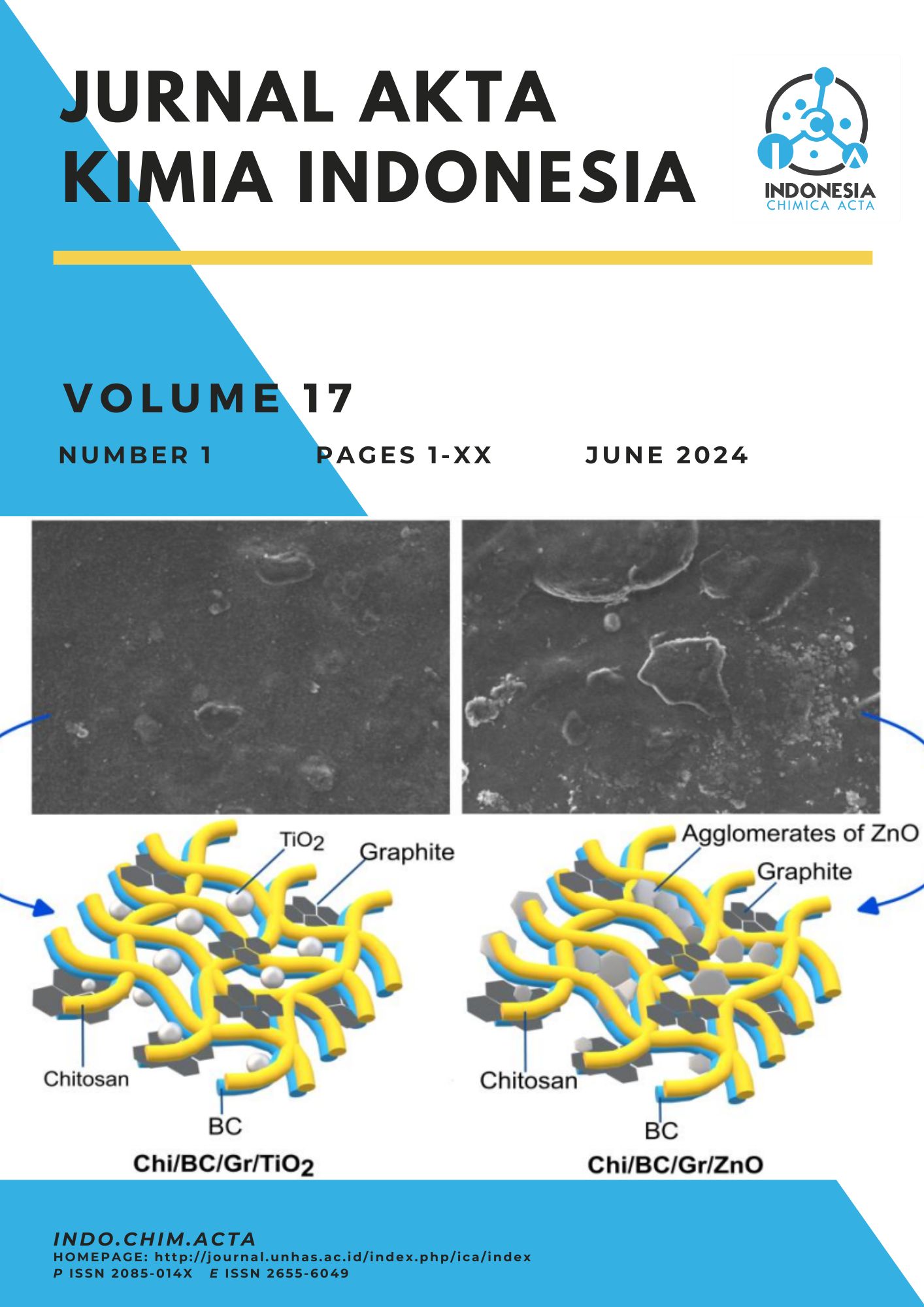Theoretical Study of Metal Ion Impact on Geometry and Bond Vibrational Properties of Salophen Compound
Abstract
Coordination compounds are compounds consisting of a metal atom as a center surrounded by ligands, which are important in applications such as catalysts and pharmacological sensors. Salophen, as one of the organic ligands, is capable of forming complexes with various metal ions. This study uses a computational chemistry approach to model the geometry, electronic properties, and bond vibrations of compound complexes between salophen and Zn(II), Cd(II), and Hg(II) metal ions using the PM6 semiempirical method. Modeling results show that the metal ion radius affects the dihedral angle of salophen, with the largest angle occurring in the complex with Hg(II) ions, while the complex with Cd(II) ions tends to be close to planar. FTIR analysis shows that the vibrational pattern is influenced by the bond length of salophen with metal ions. In addition, the HOMO-LUMO gap energy of the three complexes is also slightly different, with the Zn-salophen complex having the smallest Egap of 0.25709 eV.
Full text article
Authors
Copyright (c) 2024 Tety Wahyuningsih Manurung, Mokhamat Ariefin, Marvin Horale Pasaribu, Rokiy Alfanaar, Muhammad Hilmi Afthoni

This work is licensed under a Creative Commons Attribution-ShareAlike 4.0 International License.
This is an open access journal which means that all contents is freely available without charge to the user or his/her institution. Users are allowed to read, download, copy, distribute, print, search, or link to the full texts of the articles in this journal without asking prior permission from the publisher or the author.
Jurnal Akta Kimia Indonesia (Indonesia Chimica Acta) operates a CC BY-SA 4.0 © license for journal papers. Copyright remains with the author, but Jurnal Akta Kimia Indonesia (Indonesia Chimica Acta) is licensed to publish the paper, and the author agrees to make the article available with the CC BY-SA 4.0 license. Reproduction as another journal article in whole or in part would be plagiarism. Jurnal Akta Kimia Indonesia (Indonesia Chimica Acta) reserves all rights except those granted in this copyright notice.

